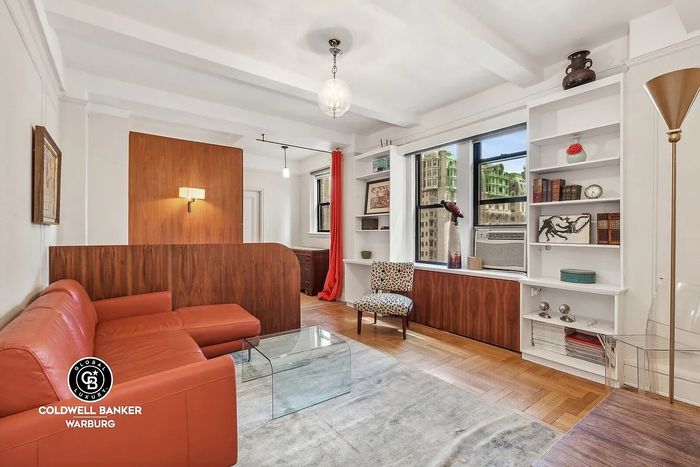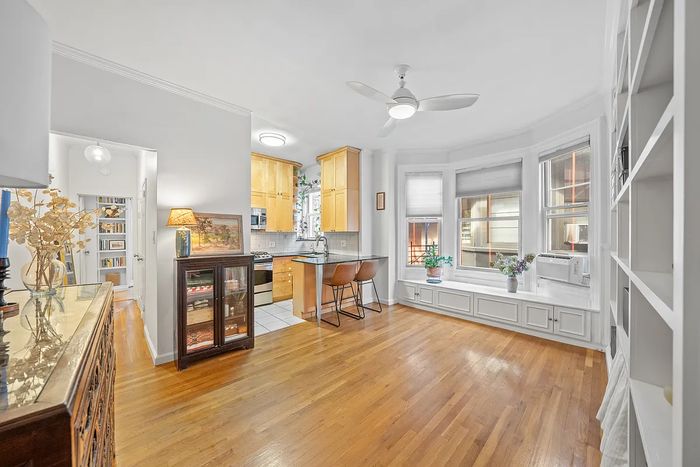The 300-Day-Old NYC Listings Suddenly Seeing Bidding Wars

By the time Lillian Norcross saw the studio apartment in Gramercy Park, it had already been on the market for more than 100 days. It had an older renovation, with a kitchen that would need updating, but it was in a prewar building with a full-time doorman and a roof terrace. At $370,000, it was also the only studio in Gramercy that she could afford. Because it was late December, during the holidays, she had to wait a few weeks until she could see it in person, and in the meantime, she imagined living there. “Studios are so small, so you have to envision it,” she says. “And I really loved the apartment.” She also assumed, quite reasonably, that she had a little room to negotiate, since it had been on the market for a while, and offered slightly under the asking price. The seller accepted. When an inspection revealed that the electrical needed to be upgraded — some of the kitchen appliances wouldn’t work — the seller agreed to do the upgrade. Then Norcross got word that there was a competing offer: full asking price and the other buyer would take the apartment as is.
“I was shocked,” says Norcross. “Especially after we’d put in an offer and it was accepted.” Her real-estate agent, Laura Cook of Keller Williams NYC, was less surprised. In fact, several of her older listings were also in the middle of out-of-the-blue bidding wars. One, a large Sutton Place one-bedroom with a terrace, went on the market in early November asking $695,000. It generated some early offers, but nothing panned out. Then, in January, multiple offers came in, setting off a bidding war and a sale over the asking price. An Upper West Side studio she’d listed for $400,000 around the same time had an early offer fall through and then, for months, nothing. Then, in February, it suddenly had three. A broker called to ask if Cook was planning to drop the price soon. “I was like, ‘No, we actually have multiple offers.’”
A spacious one-bedroom on Sutton Place that was listed this fall, as shown in listing photos, drew multiple offers in January seemingly out of the blue, ultimately going into contract for over the asking price.
Photo: Keller Williams NYC
It’s a phenomenon that brokers all over Manhattan say they’ve been experiencing recently — after watching their listings languish for several months to nearly a year, they suddenly find themselves fielding several competing bids and even selling for over the asking price. “I’ve experienced it four or five times in the last few months,” says Leslie Hirsch, an agent at Christie’s International Real Estate Group. “Listings where we’ve hit 100-plus days on the market and we’re trying to figure out strategies, tours, price cuts — and then, out of the blue, multiple bids.” Hirsch and her colleague Howard Morrel had a two-bedroom, two-bath luxury condo at a midtown high-rise on the market for more than 180 days. A neighbor in the building started circling when the price dropped from $3.2 million to $2.8 million in October, then disappeared. In January, when they finally got an offer, the neighbor swooped in with a counteroffer, and then a third buyer emerged. “It was so dramatic and unusual,” Hirsch says. Generally, bidding wars happen right off the bat or after a big price drop. Not for no reason at all.
What, exactly, is going on? A lot of it comes down to the fallout of the weird, COVID-era housing market: After years of low inventory and high interest rates, buyers are begrudgingly accepting that things will not magically improve. Now there’s a lot of pent-up demand and not much to choose from. “Supply and demand are both up year over year. But supply is up 10 percent and demand is up 30 percent,” says John Walkup, the co-founder of Urban Digs. “You have these frustrated buyers, and they’re all looking for nuggets of value.” And so far, brokers say, there hasn’t been a flood of great spring inventory, so buyers seem to be circling back to listings that got overlooked when they came on the market or had early deals fall through and lost momentum. “During the fall, contract signings were up 11 percent to 28 percent in Manhattan,” says Keller Williams NYC agent William Krooss Tadas. “It wasn’t a lot, but nothing was coming on the market, so even those little shifts made it hard for buyers to pick up an apartment.”
This Upper West Side studio, as shown in listing photos, was well priced and well maintained. Broker Tate Kelly listed it last spring and dropped the price last July. It got no offers at the time but ended up in a bidding war in October.
Photo: Coldwell Banker Warburg
Brokers for house hunters are now doing whatever they can to get a jump on good listings. “Lately, I’ve been inundated with ‘in search of emails’ from other brokers,” says Tate Kelly, an associate broker at Coldwell Banker Warburg, who so far, at least, hasn’t seen a rush of great new spring listings. He recently handled a three-way bidding war on an Upper West Side prewar studio that had been on the market for 200 days. It was, in his words, “well maintained, nothing wrong with it, priced really well.” Even so, it wasn’t moving at $425,000, and in July the seller dropped the price to $415,000. It languished until October, when a lowball offer came in. The seller was unhappily mulling it when another offer emerged, then another. It ultimately went in contract for the full asking price of $415,000, and as soon as the contract went out, he had another offer — although everyone was too exhausted at that point to entertain it.
But the phenomenon might not be entirely random, either. Brokers say one thing they’ve noticed about old listings that suddenly go into bidding wars is that they became, as Hirsch puts it, “the best deals wherever they were.” While it may seem baffling to buyers who get shouldered out of a deal for a nothing-special apartment that’s been sitting around for months, brokers say that when you actually look at the inventory, those listings are “just a little bit better than the alternatives,” according to Tadas. He recently represented a couple who put in a $700,000 offer on a modest Morningside Heights two-bedroom that had been listed at $750,000 for more than 100 days. Soon, they were facing off against three other bidders and ended up signing a contract for 98.5 percent of the asking price “on a property that had been on the market for over 100 days, which is insane,” he says. (Another one of his buyers had a 300-plus-days-old listing on 34th Street stolen out from under them by an all-cash bid they were told was over the asking price.)
The living room of the Morningside Heights two-bedroom, as shown in listing photos, was a little nicer than the competition, and Tadas’s clients ended up paying nearly the full ask despite its being on the market for 100-plus days.
Photo: Corcoran
There are also a few subtle signals in the home-shopping process that might trigger a surge of offers. An interested buyer arriving at an unexpectedly busy open house or getting rushed out the door to accommodate another showing might feel spurred to action. Several brokers I spoke with also suspected the sellers’ brokers had shopped their clients’ offers — reaching out to previous bidders or other interested parties to engineer a bidding war. But, Tadas adds, it also depends on the mind-set of the buyer, and he says there are two types: the ones who will shop around until something really resonates with them, and the ones who are determined to buy now. The “need to buy now” buyers will consider all the options in their tiny market segment — i.e., Morningside Heights two-beds under $800,000 — and go for the best one. If there are two or three of those driven buyers in the same small pool, it might well result in a bidding war.
As rents continue to rise, more apartment hunters are also becoming the second type of buyer. A 33-year-old private-equity investor who rents a $4,575-a-month one-bedroom on the Upper East Side told me she was motivated to buy after her landlord announced a 15 percent rent increase — she’d already thought the apartment was overpriced. “I’ve been saving money, and I decided buying was a good use of it,” she says. She was one of the bidders on Cook’s $695,000 Sutton Place listing — she offered $725,000 but was outbid and moved on to a one-bedroom at 72nd and First Avenue, another postwar co-op with a terrace, asking $795,000. She didn’t want to miss out again, so she offered $800,000, even though it needed work. She was outbid with an $850,000 all-cash offer, but the listing broker, who lives in the building, told her that the board actually prefers buyers with mortgages, because the bank is on the hook for the fees if anything happens. She upped her offer to $810,000 and is now in contract.
Norcross, the buyer who bid on the Gramercy studio, decided to bow out instead of upping her offer. She was worried that the electrical issues might be expensive to fix and didn’t want to counter with more and have to shoulder that cost herself. “It was definitely a frustrating process,” she says. “It took a reframing of my mind to get it off that apartment.” She’s now in contract on a Lenox Hill studio that she also saw over the holidays but wasn’t initially sold on (she’d been excited about staying in Gramercy, where she was renting). But after losing out on the Gramercy studio, she came back to the Upper East Side one. It had also been on the market for over 100 days, but it didn’t need any work, so she put in an offer at ask. There was another offer, of course. But, thankfully, she says, “They accepted mine.”
Source link









